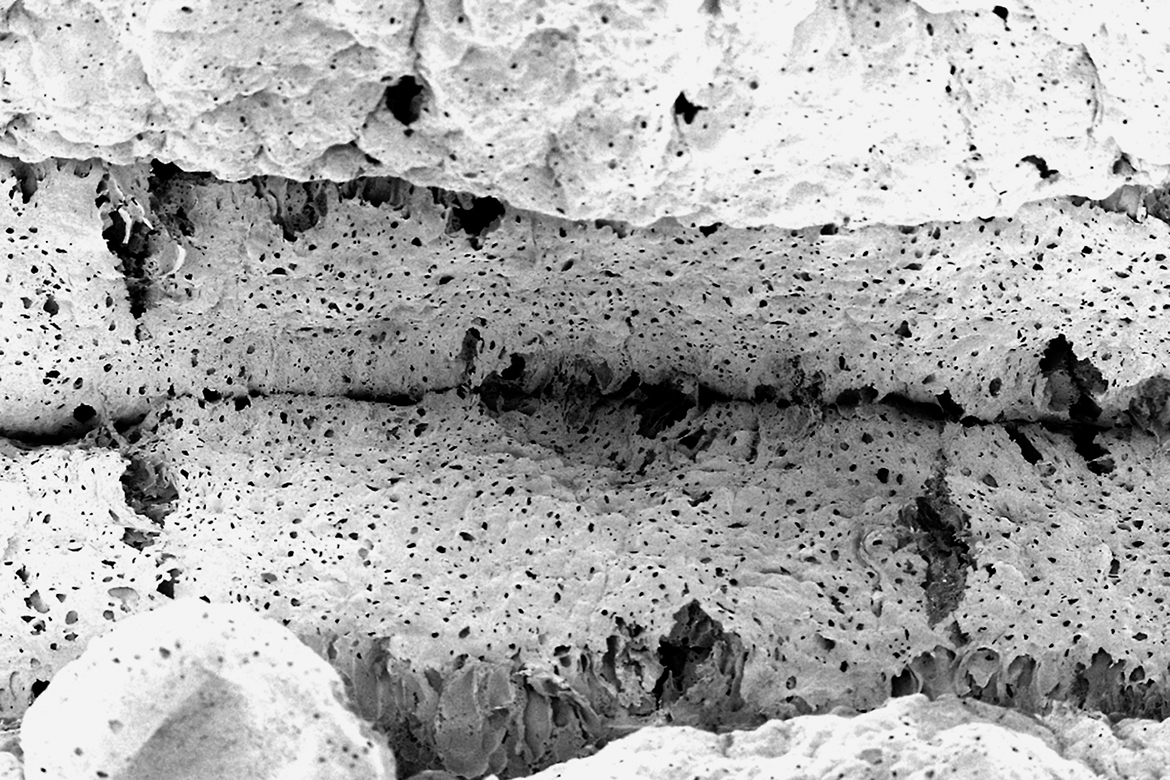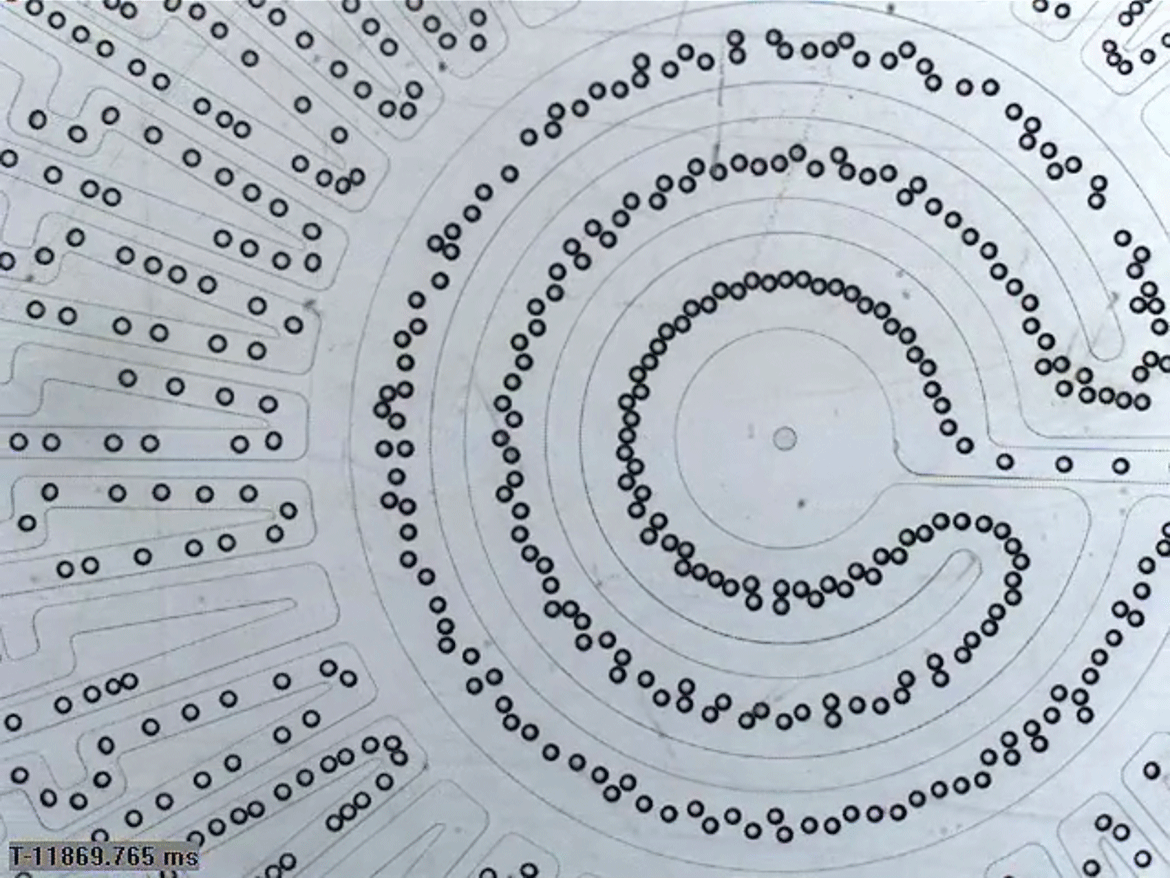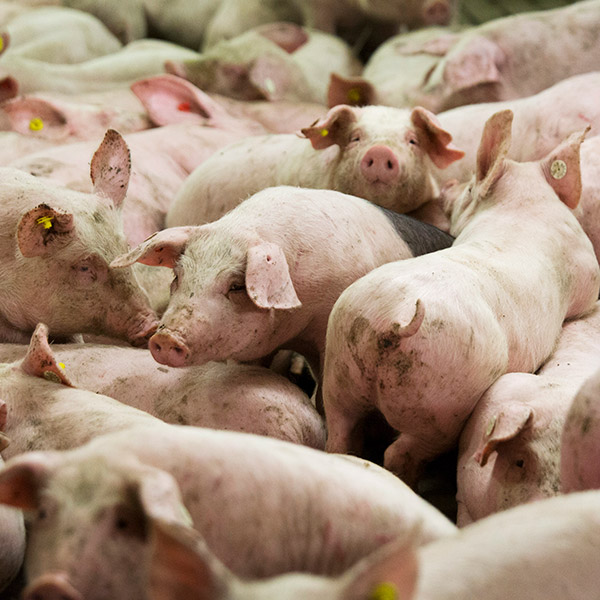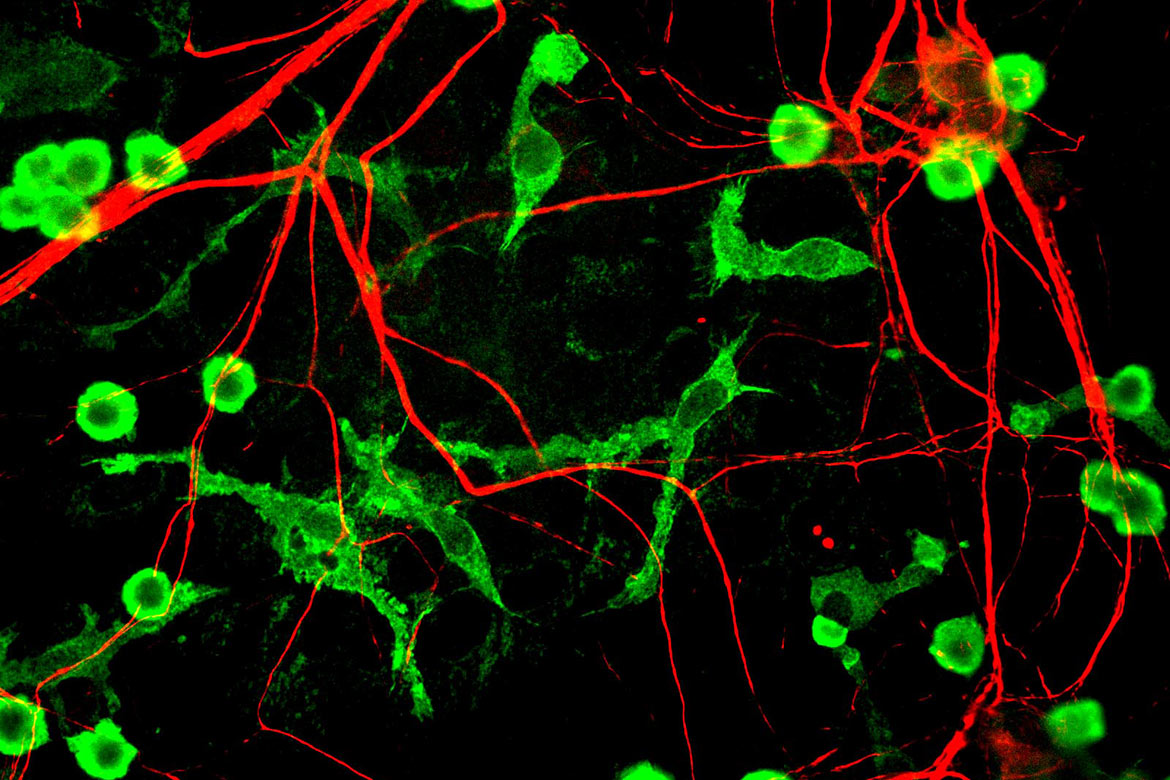Medical fibres
Biodegradable fibres for better control of drug distribution
Encapsulation can provide a more controlled means of releasing drugs into the body. Making polymer fibres with a new spinning procedure can help.

The polymer decays over several weeks. It should slowly release drugs into the body. | Image: Fabien Sorin
The encapsulation of drugs can better control their diffusion kinetics in the body, which can in turn improve the impact of many treatments. The EPFL professor Fabien Sorin and his team are developing an original approach: biodegradable fibres with a tailor-made ‘chiselled’ microstructure. The fibres are made from a synthetic polymer, PLGA, or poly(lactic and polyglycolic acid). It is already used in the form of spherical capsules, in particular to encapsulate molecules. It allows only limited control of the diffusion of the molecules, however. “The novelty lies in our PLGA spinning process. We produce fibres with very complex microstructures, which can contain a large number of different molecules and release each of them according to precise kinetics”, says Sorin.
The first challenge is to model the chemical structure of the polymer in such a way that it can be transformed into microstructured fibres. The second challenge is to design fibres that degrade according to a chosen modality and kinetics in a medium that reproduces the interior of the human body. To this end, the researchers experimented with the respective proportions and positions of the monomers (i.e., lactide, glycolide) that make up PLGA and on the length of its chains.
In vitro, it effectively controlled the release of drug-mimicking fluorescent markers. But the PLGA spinning process has other advantages too. The fibres have good mechanical strength, offering prospects for a new type of suture. They can also be woven, opening up a promising avenue for “smart” implants or dressings. “For example, we can imagine dressings capable of releasing analgesics and healing substances as the wound evolves”, says Sorin.




